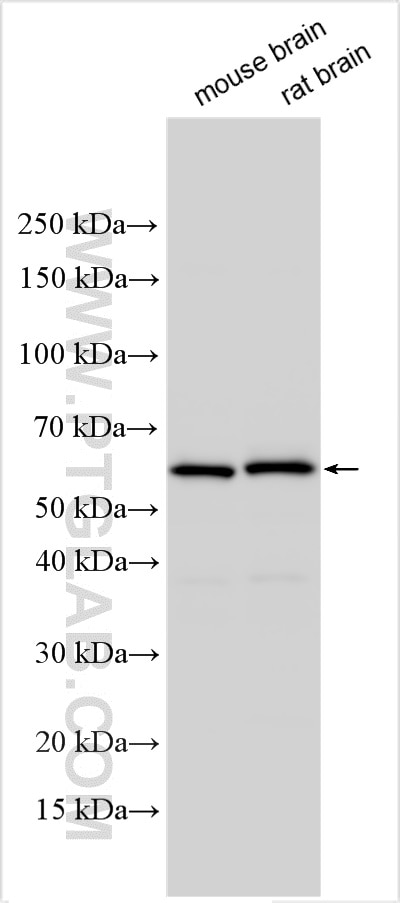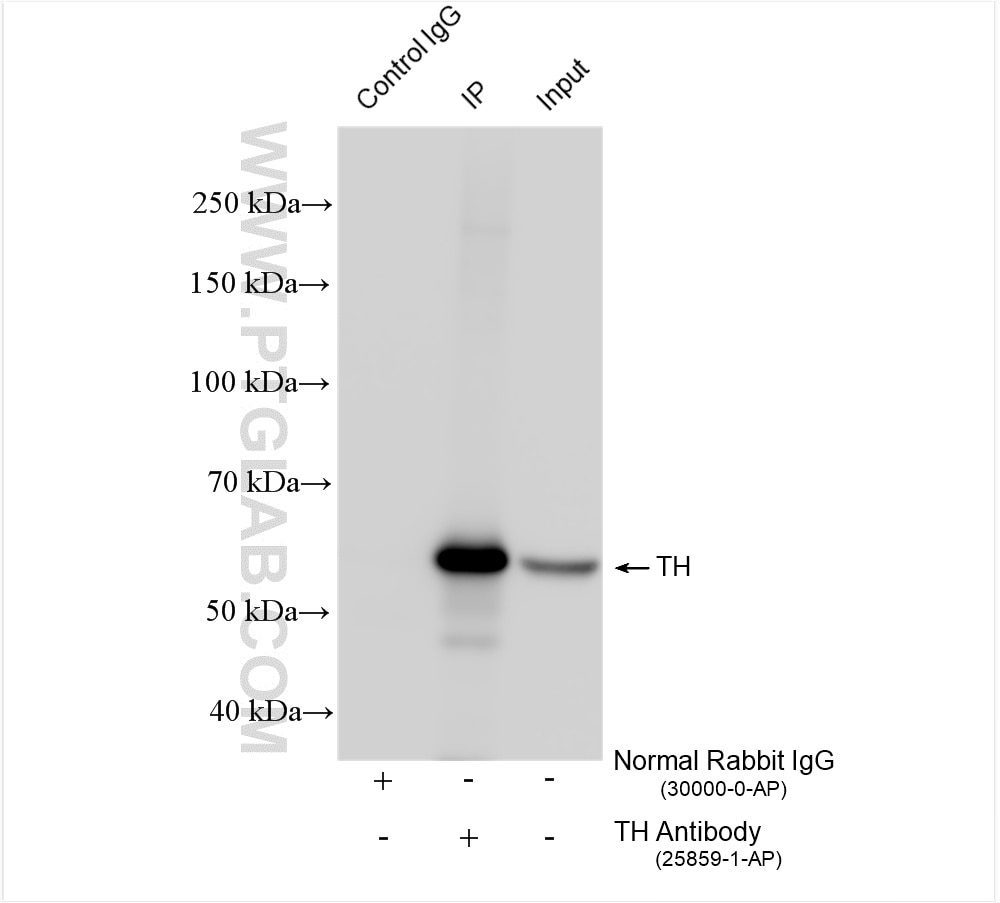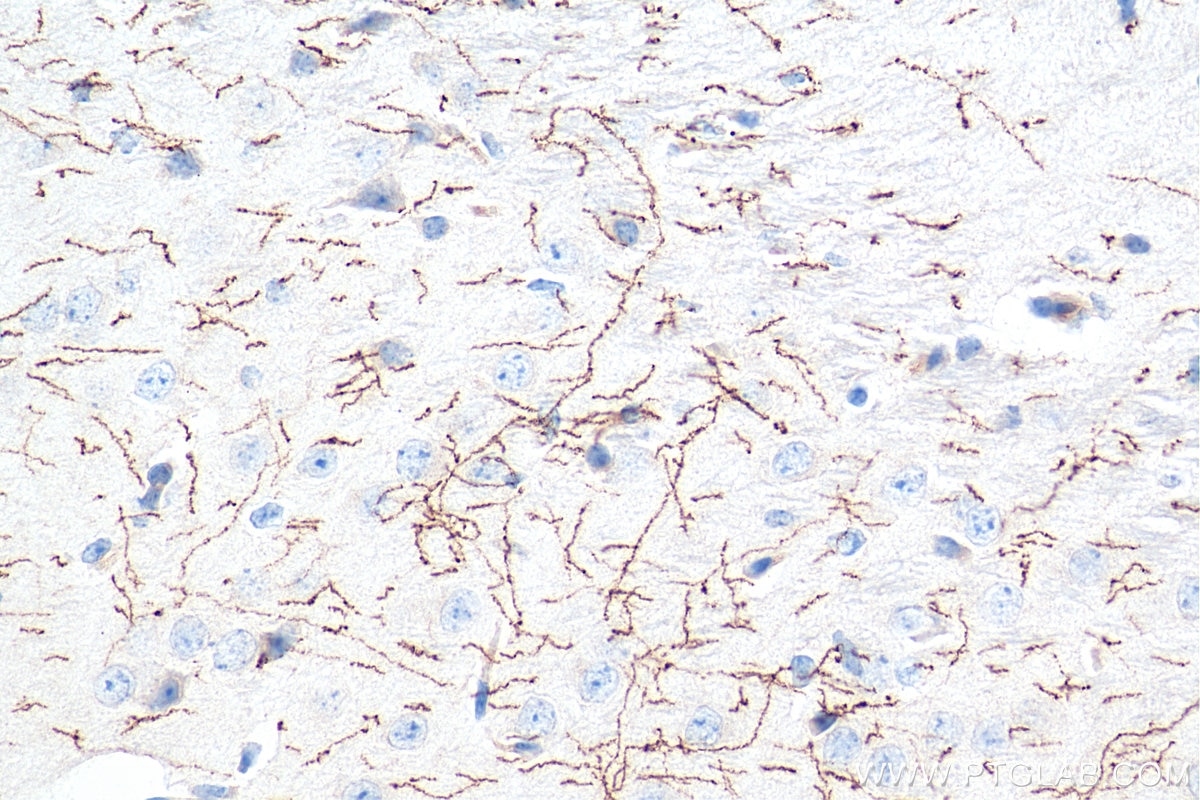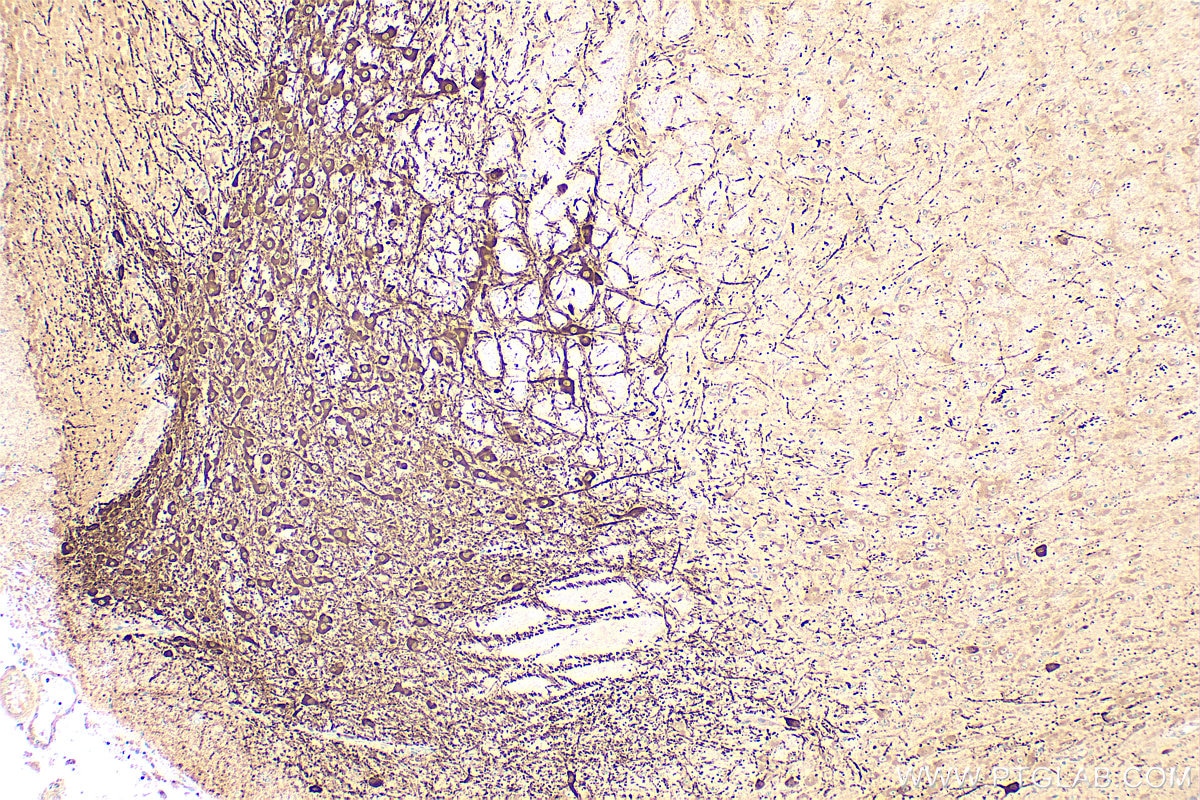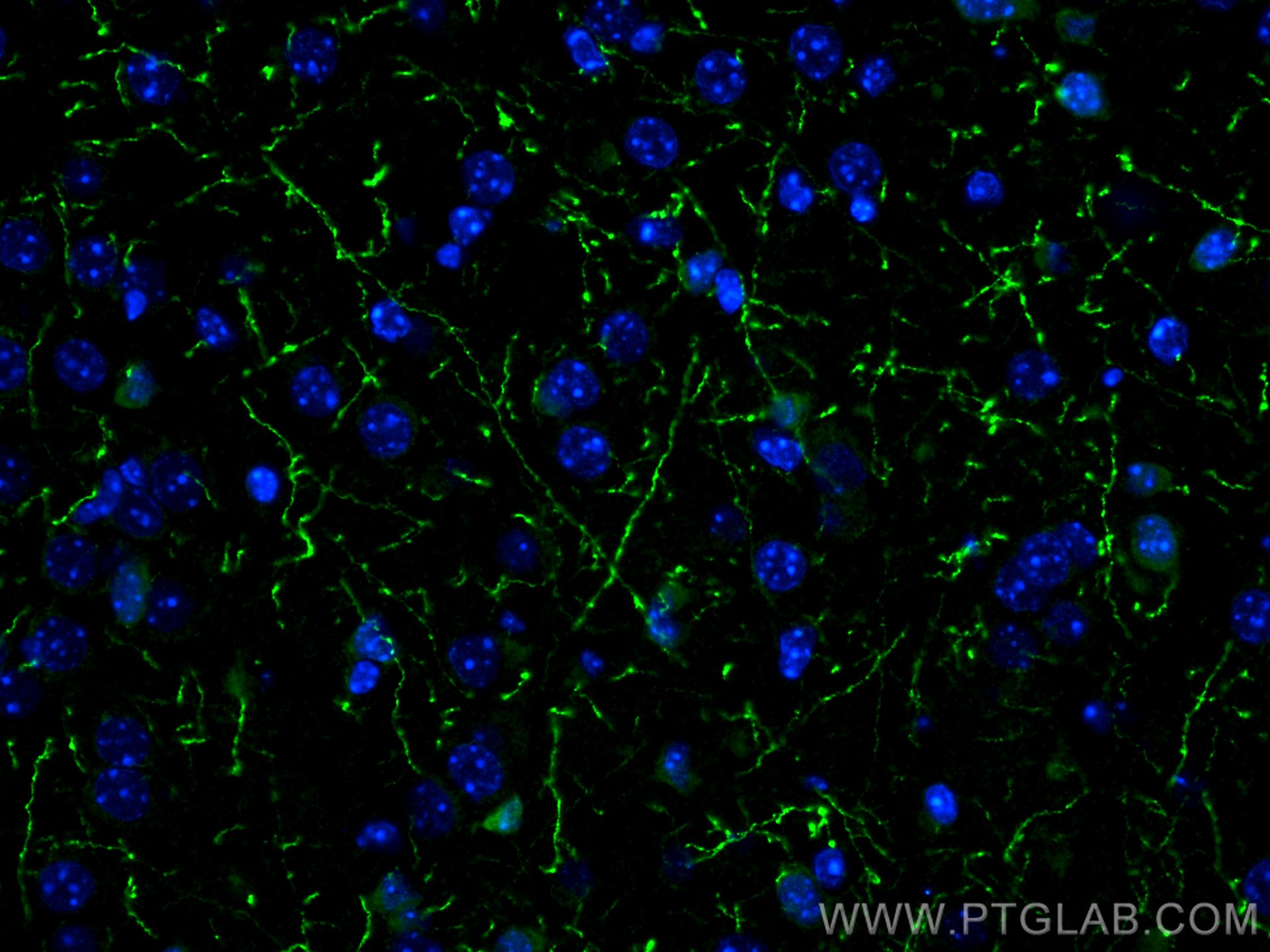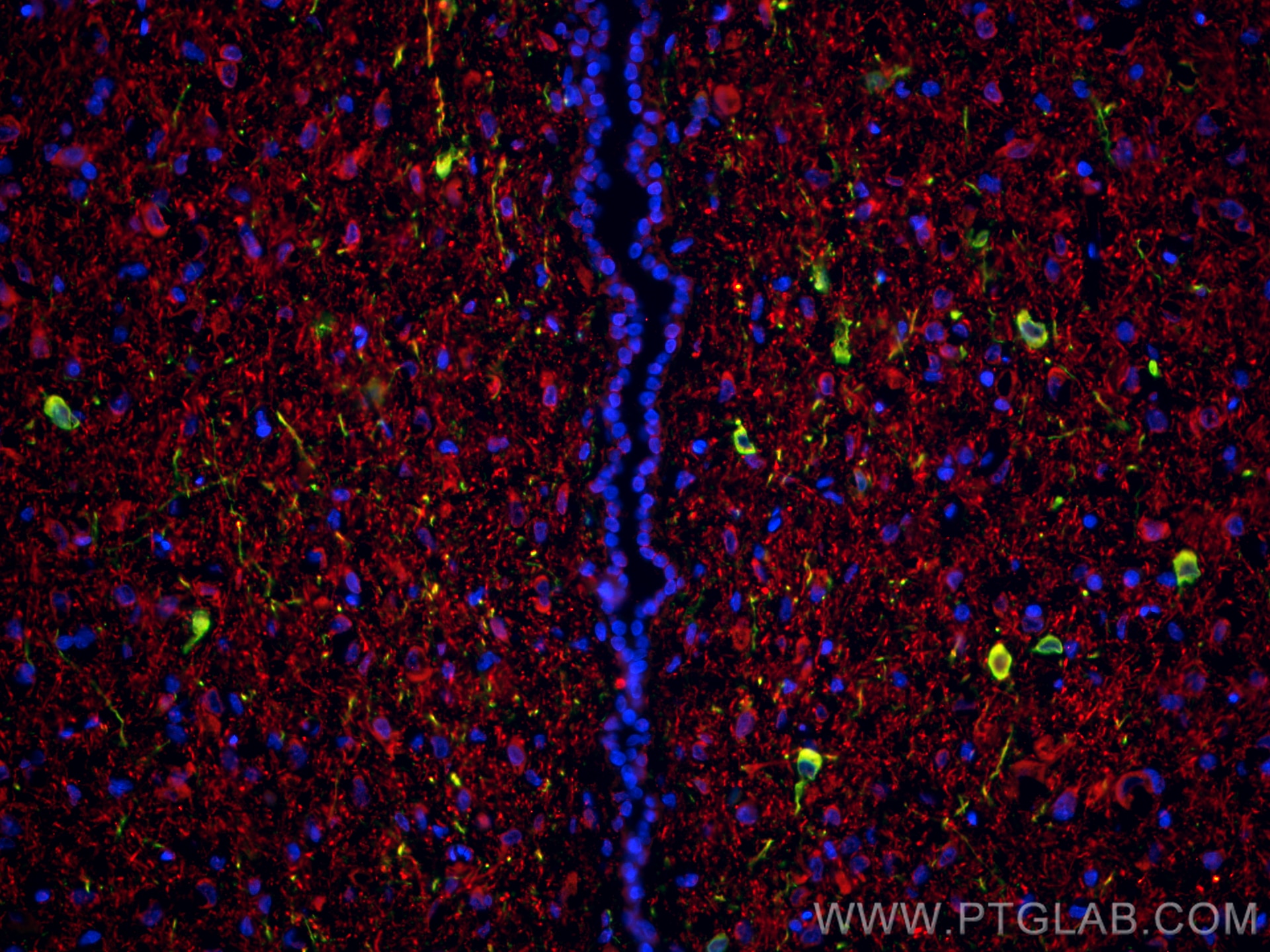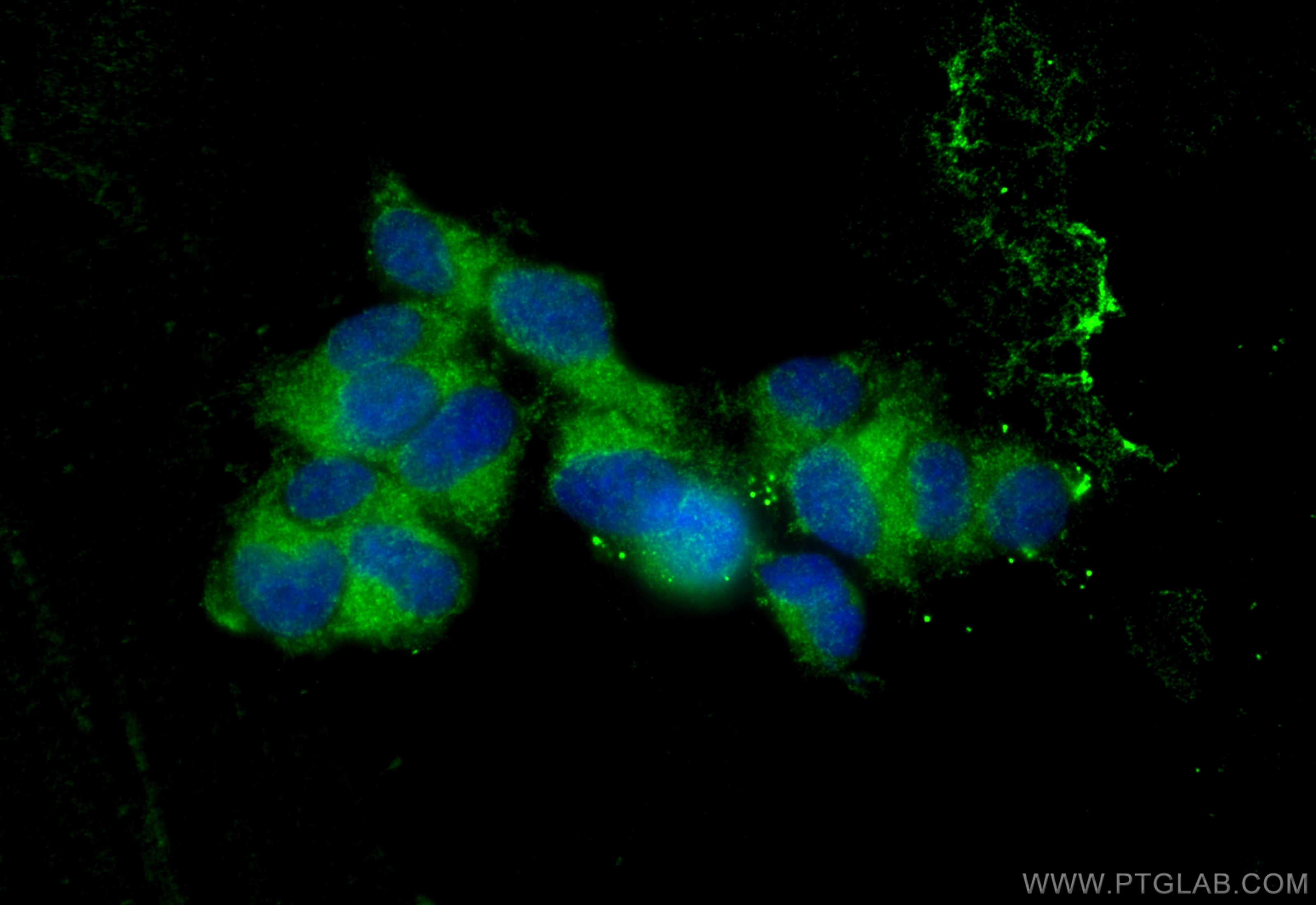Validation Data Gallery
Tested Applications
| Positive WB detected in | rat brain tissue |
| Positive IP detected in | mouse brain tissue |
| Positive IHC detected in | mouse brain tissue Note: suggested antigen retrieval with TE buffer pH 9.0; (*) Alternatively, antigen retrieval may be performed with citrate buffer pH 6.0 |
| Positive IF-P detected in | mouse brain tissue |
| Positive IF-Fro detected in | rat brain tissue |
| Positive IF/ICC detected in | PC-12 cells |
Recommended dilution
| Application | Dilution |
|---|---|
| Western Blot (WB) | WB : 1:5000-1:50000 |
| Immunoprecipitation (IP) | IP : 0.5-4.0 ug for 1.0-3.0 mg of total protein lysate |
| Immunohistochemistry (IHC) | IHC : 1:500-1:2000 |
| Immunofluorescence (IF)-P | IF-P : 1:200-1:800 |
| Immunofluorescence (IF)-FRO | IF-FRO : 1:50-1:500 |
| Immunofluorescence (IF)/ICC | IF/ICC : 1:50-1:500 |
| It is recommended that this reagent should be titrated in each testing system to obtain optimal results. | |
| Sample-dependent, Check data in validation data gallery. | |
Published Applications
| WB | See 126 publications below |
| IHC | See 68 publications below |
| IF | See 91 publications below |
| ELISA | See 1 publications below |
Product Information
25859-1-AP targets TH in WB, IHC, IF/ICC, IF-P, IF-Fro, IP, ELISA applications and shows reactivity with human, mouse, rat samples.
| Tested Reactivity | human, mouse, rat |
| Cited Reactivity | human, mouse, rat, canine, zebrafish, gerbil |
| Host / Isotype | Rabbit / IgG |
| Class | Polyclonal |
| Type | Antibody |
| Immunogen |
CatNo: Ag23075 Product name: Recombinant human TH protein Source: e coli.-derived, PET30a Tag: 6*His Domain: 1-260 aa of BC104967 Sequence: MPTPDATTPQAKGFRRAVSELDAKQAEAIMSPRFIGRRQSLIEDARKEREAAVAAAAAAVPSEPGDPLEAVAFEEKEGKAMLNLLFSPRATKPSALSRAVKVFETFEAKIHHLETRPAQRPRAGGPHLEYFVRLEVRRGDLAALLSGVRQVSEDVRSPAGPKVPWFPRKVSELDKCHHLVTKFDPDLDLDHPGFSDQVYRQRRKLIAEIAFQYRHGDPIPRVEYTAEEIATWKEVYTTLKGLYATHACGEHLEAFALLER 相同性解析による交差性が予測される生物種 |
| Full Name | tyrosine hydroxylase |
| Calculated molecular weight | 528 aa, 59 kDa |
| Observed molecular weight | 55-60 kDa |
| GenBank accession number | BC104967 |
| Gene Symbol | TH |
| Gene ID (NCBI) | 7054 |
| RRID | AB_2716568 |
| Conjugate | Unconjugated |
| Form | |
| Form | Liquid |
| Purification Method | Antigen affinity purification |
| UNIPROT ID | P07101 |
| Storage Buffer | PBS with 0.02% sodium azide and 50% glycerol{{ptg:BufferTemp}}7.3 |
| Storage Conditions | Store at -20°C. Stable for one year after shipment. Aliquoting is unnecessary for -20oC storage. |
Background Information
TH(Tyrosine 3-monooxygenase) converts L-tyrosine to L-3,4-dihydroxyphenylalanine (L-DOPA), the essential and rate-limiting step to formation of dopamine and other catecholamines. TH plays an important role in the physiology of adrenergic neurons and can be used as a marker for dopaminergic and noradrenergic neurons. This protein has 6 isoforms produced by alternative splicing with the MW from 44 kDa to 58 kDa.
Protocols
| Product Specific Protocols | |
|---|---|
| IF protocol for TH antibody 25859-1-AP | Download protocol |
| IHC protocol for TH antibody 25859-1-AP | Download protocol |
| IP protocol for TH antibody 25859-1-AP | Download protocol |
| WB protocol for TH antibody 25859-1-AP | Download protocol |
| Standard Protocols | |
|---|---|
| Click here to view our Standard Protocols |
Publications
| Species | Application | Title |
|---|---|---|
Signal Transduct Target Ther Identifying genetic targets in clinical subtypes of Parkinson's disease for optimizing pharmacological treatment strategies | ||
Neuron Gut-induced alpha-Synuclein and Tau propagation initiate Parkinson's and Alzheimer's disease co-pathology and behavior impairments | ||
Adv Sci (Weinh) OTUD5 Protects Dopaminergic Neurons by Promoting the Degradation of α-Synuclein in Parkinson's Disease Model | ||
Nat Commun Imprinted lncRNA Dio3os preprograms intergenerational brown fat development and obesity resistance. | ||
Nat Commun NAc-VTA circuit underlies emotional stress-induced anxiety-like behavior in the three-chamber vicarious social defeat stress mouse model. |

